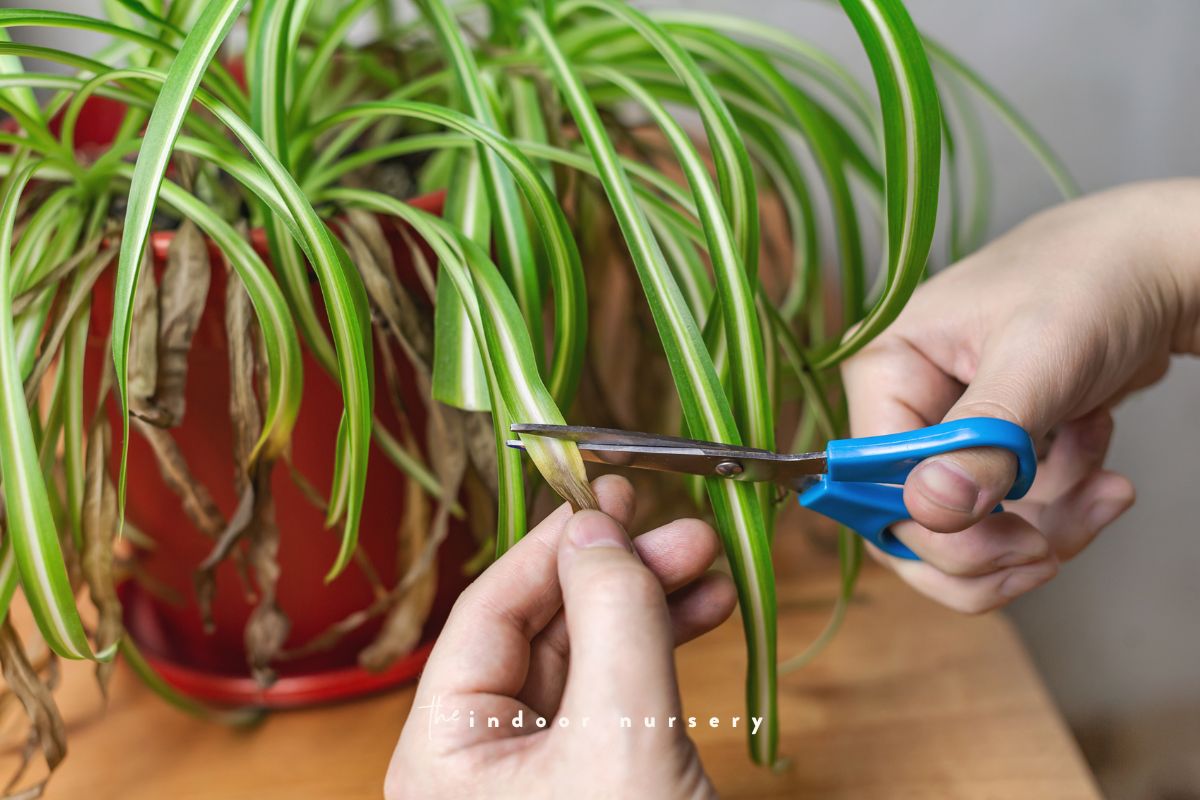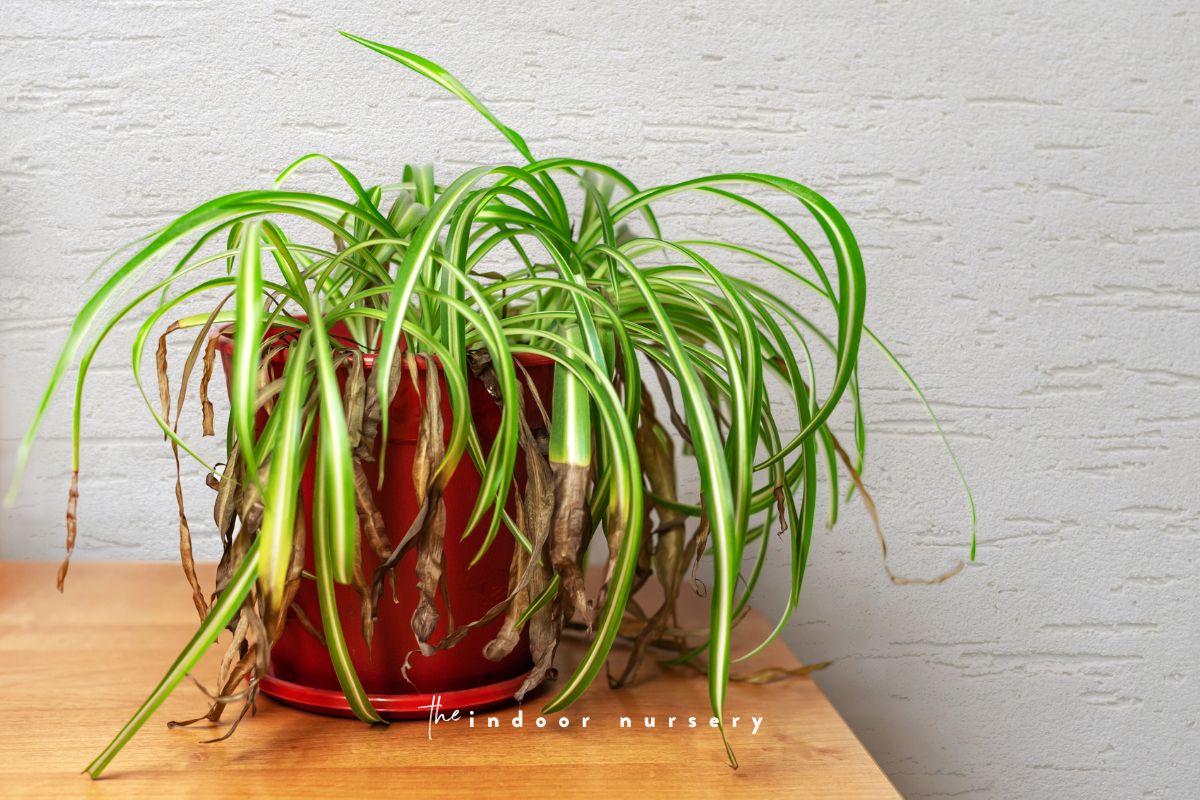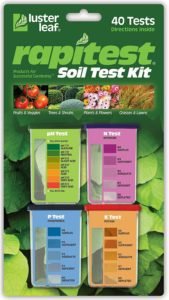For a variety of reasons, many types of houseplants can develop brown, crispy tips or edges at the ends of their leaves. Spider plants are one of those whose long, thin leaves tend to dry out when they get stressed. This is a symptom of another problem, and can usually be remedied once the issue is diagnosed.
What causes brown tips on spider plants?
The brown, crunchy ends of spider plant leaves show up when the plant is stressed in one way or another. These outermost edges of the plant are the last to get moisture and nutrients from the roots and stem(s), and the first to lose it when internal reserves need to be tapped. This means that if your spider plant has gotten too little, or too much, water, nutrients or minerals, or is drying out from too much light or too low humidity, the spider plant’s leaf tips will start to crisp up.
Brown leaf tips are a signal you can take to inspect the soil conditions and watering schedule. Once the problem is corrected, clipping the dead material from affected leaves at an angle with clean, sharp scissors will restore your spider plant a totally green condition.
I keep get browning on leaf tips on my spider plant. I think im watering to much. Is it better to get it to dry out before i water it?Overwatering
Spider plants are known to be among the easiest houseplants to care for since they don’t need a lot of attention. They only need to be watered once a week, and if a plant is getting too much water, browning tips is one of many signs that the plant’s soil is too wet. Brown spots on the leaves, yellowing, droopiness and mushy leaves are also symptomatic of a plant that’s suffering from water stress.
When there’s excess water in the soil, the roots aren’t able to take up oxygen and begin to drown; their roots might also start to get mushy or succumb to root rot. Brown tips may be the first sign that the roots aren’t taking up moisture or nutrients. Consider how often you water and be sure to check the soil before watering. If it’s still moist after a week, wait another day or two so the soil can continue to dry out.
Underwatering
On the other hand, too little water can also be damaging to a spider plant. These plants are tropical (from coastal South Africa) and are used to a regular amount of moisture. When a plant’s potting soil becomes too dry, the plant starts to tap internal stores of moisture for energy. The ends of their long leaves are the thin and fragile, and they lose moisture most quickly when the roots aren’t getting enough water.
Spider plants have thick, fleshy roots that tend to fill in a pot over time. If there’s too much root and too little growing material, not enough moisture can be held between waterings. If your spider plant needs to be repotted, it might be losing the water too quickly and drying out too much. It’s recommended to repot a spider plant once a year, especially those that are growing quickly.
Mineral content buildup from tap water
Tap water contains minerals and chemicals that make drinking water safe and don’t harm us in low amounts, including fluoride and chlorine, but these aren’t good for certain plants in any amount. The fluoride and chlorine interfere with absorbing moisture and nutrients, as well as a plant’s production of chloroplasts, and thereby the photosynthesis process. Brown tips start to show when the plant taps its internal reserves for energy. Using filtered water is one of the best ways to resolve this problem. The tips won’t heal, but new ones won’t brown.
Overfertilization
Another reason that spider plants are easy to care for is their low fertilizer needs. Spider plants usually need to be fertilized just once a year, or a few times in the spring and summer with heavily diluted concentrations. Synthetic nutrients contain high levels of salt, which can damage roots and stress the rest of the plant.
Too much organic fertilizer can be damaging as well, since nutrient inputs affect the soil’s pH and the availability of other nutrients. For example, high acidity from adding too much worm casting fertilizer can make certain nutrients, like calcium, nitrogen, and phosphorus, unavailable. When the plant gets stressed from a nutrient surplus or deficiency, the tips of the spider plant’s leaves may be the first to go.
Low Humidity
Like underwatering a spider plant, low humidity dehydrates plant leaves and can result in the brown, dry tips we’d all rather not see. Spider plants, as coastal natives, appreciate a humidity level between 50% and 60%, just at, or slightly higher, than a home’s normal humidity range (between 30% and 50%).
When humidity is too low, there is less moisture in the air for plants to absorb through their stomata, or the pores on their leaves. Low humidity also causes plants to lose moisture since the dry air evaporates moisture. This ends up stressing the plant by encouraging transpiration when it needs to be conserving moisture and energy. If you live in a dry location, using a humidifier and a humidity meter will help you keep the most comfortable conditions for your spider plant.
Too much sun
Another way an indoor spider plant can become dehydrated or suffer from leaf tip burn is by getting too much sun exposure. Spider plants like lots of indirect sunlight, and their long, thin leaves will lose moisture from the heat of direct sun, which can scorch the leaves if they get too much of it. In addition to crispy brown tips, leaves can turn pale as they get bleached from the harsh light.
How to fix browning tips on your spider plant

Once you’re able to identify the source of the brown tips, go ahead and make your adjustments. I like to repot my plants (if they’re healthy enough) to give them a boost of nutrition and moisture while clearing out any problematic soil. I like a mix of:
- 2 parts Fox Farm potting soil
- 1 part Sphagnum Moss
- 1 part Cactus/Succulent Mix
Once you’ve repotted, then trim off any brown tips on your spider plant. And place it in indirect sunlight.
General spider plant care tips
Caring for your spider plant(s) is an easy job when you have the rhythm down right. They don’t need much attention throughout the week, or the year, but to keep them happy, some general rules can be followed:
- Water once a week. Spider plants don’t like their soil to dry out completely, but they like to be at the edge. About once a week should do it!
- Use distilled water. The minerals and treatments added to tap water can result in dry, brown tips, so use filtered water to keep it healthy and fully green.
- Put them in bright, indirect sunlight. The long, thin leaves of a spider plant can easily dry out and possibly burn in direct sunlight, resulting in crispy tips and edges.
- Fertilize with low doses, infrequently. Too many nutrients or salts built up in the soil can affect a plant’s ability to absorb other nutrients. Spider plants are particularly sensitive and don’t like too much fertilizer, so it should be fed sparsely.
- Change pots once a year. Spider plants, who put out the small, dangling baby plants that give the plant its common name, also put outside pups in their pots to reproduce. This can make the space crowded, and the extra roots prevent the pot from holding more water. They can also grow large and quickly when well-maintained, another reason to upgrade pots and give fresh soil from time to time.
- Monitor the humidity. Spider plants like the humidity levels to be between 50% and 60%, so if your home is on the dry side, using a humidifier and a meter will help keep your plant well-hydrated.
Closing thoughts
Spider plants are among the hardiest indoor plants, making them easy to care for when their conditions are most comfortable. Avoid crispy brown tips by keeping them hydrated, but not overwatered, and out of direct sunlight. When you take good care of a spider plant, it will give you years of pleasant returns!
more about common questions
- How To Get Rid Of Scale On Plants
- How To Treat A Magnesium Deficiency In Cannabis
- It’s Not O-K: Potassium Deficiency in Cannabis
- How To Make Pothos Fuller (In 5 Minutes)
- Save Your Overwatered Monstera In 4 Steps (And How Not To Do It Again)
- Scale On Monstera: What To Do And How To Save It
- Common Calathea Problems and How to Fix Them




